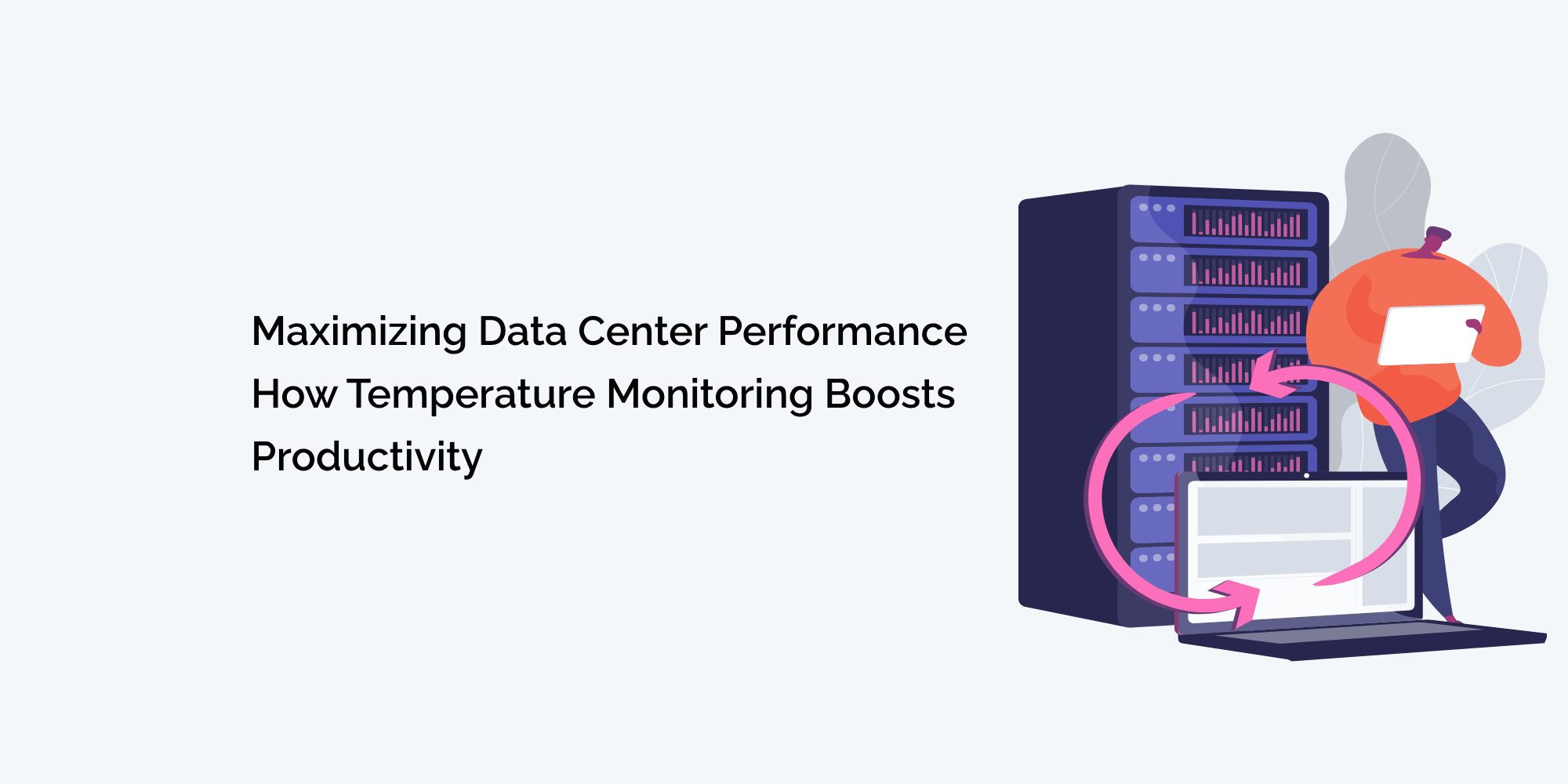In today's digital age, data centers serve as the backbone of various industries, supporting critical applications, services, and transactions. As data centers continue to handle increasingly complex workloads, maintaining optimal environmental conditions becomes crucial for maximizing productivity and efficiency. Temperature monitoring plays a pivotal role in data center management, allowing administrators to proactively detect temperature fluctuations, prevent overheating, and optimize cooling efficiency. In this comprehensive blog, we will explore the significance of temperature monitoring in data centers, its impact on productivity, and the strategies for maximizing data center performance through effective temperature management.
The Importance of Temperature Monitoring in Data Centers:
Temperature monitoring in data centers is vital for several reasons:
-
Hardware Reliability: Modern data centers house high-performance hardware components that operate optimally within specific temperature ranges. Monitoring ensures that these components remain within the recommended temperatures, enhancing their reliability and lifespan.
-
Preventing Downtime: Overheating can lead to critical hardware failures, resulting in costly downtime and potential data loss. Real-time temperature monitoring enables administrators to take immediate action and prevent unplanned outages.
-
Energy Efficiency: Efficient cooling management based on real-time temperature data allows data centers to optimize cooling systems for energy efficiency, reducing operational costs and environmental impact.
-
Proactive Issue Detection: Early detection of temperature fluctuations enables administrators to address potential issues before they escalate, reducing the risk of hardware failures and downtime.
- Ensuring Data Integrity: Temperature monitoring plays a critical role in protecting valuable data by reducing the risk of temperature-related hardware failures.
The Impact of Temperature on Data Center Productivity:
Temperature directly affects data center productivity in the following ways:
-
Hardware Performance: Optimal temperatures ensure that hardware components operate at their best performance levels, maximizing data center efficiency.
-
Cooling System Efficiency: Monitoring temperature data allows administrators to fine-tune cooling systems, improving their efficiency and effectiveness.
-
Preventing Thermal Throttling: High temperatures can trigger thermal throttling, where servers reduce performance to prevent overheating. This can lead to slower data processing and response times.
- Data Center Density: As data centers become more compact and dense, effective temperature management becomes even more critical to prevent hotspots and maintain uniform cooling.
How Temperature Monitoring Boosts Data Center Productivity:
Temperature monitoring boosts data center productivity through the following strategies:
-
Proactive Issue Mitigation: Real-time temperature monitoring allows administrators to address potential issues before they impact performance, preventing hardware failures and downtime.
-
Energy Optimization: Efficient cooling management based on temperature data leads to reduced energy consumption and operational costs.
-
Cooling System Fine-Tuning: Temperature data facilitates the optimization of cooling systems, ensuring they function at peak efficiency to support high-performance hardware.
-
Predictive Maintenance: Analyzing historical temperature data enables predictive maintenance, allowing administrators to schedule preventive actions before potential issues arise.
- Enhanced Uptime: Proactive temperature monitoring minimizes the risk of temperature-related hardware failures, leading to reduced downtime and improved service availability.
Key Components of an Effective Temperature Monitoring System:
An effective temperature monitoring system in data centers should include the following components:
-
High-Quality Temperature Sensors: Accurate and reliable temperature sensors are crucial to providing precise temperature data.
-
Remote Monitoring Capability: Remote access to temperature data allows administrators to monitor conditions from anywhere, facilitating quick responses to potential issues.
-
Real-Time Alerts: Customizable alerts and notifications inform administrators when temperatures exceed predefined thresholds, enabling immediate action.
-
Redundancy and Fail-Safes: Implement redundant monitoring systems to ensure continuous data collection, even during system failures or outages.
-
Integration with Data Center Management Platforms: Integration with existing infrastructure management platforms provides a comprehensive view of data center conditions and enables data-driven decision-making.
- Historical Data Analysis: Analyzing historical temperature data helps identify trends and patterns, facilitating predictive maintenance and proactive cooling strategies.
Best Practices for Effective Temperature Management:
To maximize data center performance through effective temperature management, consider the following best practices:
-
Comprehensive Sensor Deployment: Place temperature sensors strategically throughout the data center to monitor temperature variations effectively.
-
Regular Calibration and Maintenance: Periodically calibrate temperature sensors to ensure accurate and reliable data collection over time.
-
Disaster Preparedness: Develop a comprehensive disaster preparedness plan that includes protocols for temperature-related emergencies.
-
Staff Training: Educate data center staff on temperature monitoring procedures and the importance of cooling efficiency.
-
Continuous Monitoring and Trend Analysis: Continuous temperature monitoring and trend analysis provide valuable insights into data center cooling system performance.
- Integration with Cooling Optimization Technologies: Integrate temperature monitoring with cooling optimization technologies to achieve maximum cooling efficiency.
Conclusion:
Temperature monitoring is a fundamental element in data center management, impacting hardware performance, cooling efficiency, and overall data center productivity. By implementing an effective temperature monitoring system, data centers can proactively address temperature-related issues, prevent downtime, optimize cooling efficiency, and ensure reliable performance.
Maximizing data center productivity through temperature monitoring requires accurate and reliable sensors, remote monitoring capabilities, real-time alerts, and integration with data center management platforms. By following best practices and adopting advanced cooling optimization technologies, data centers can achieve peak performance, safeguard valuable data, and meet the demands of a fast-paced digital landscape.








